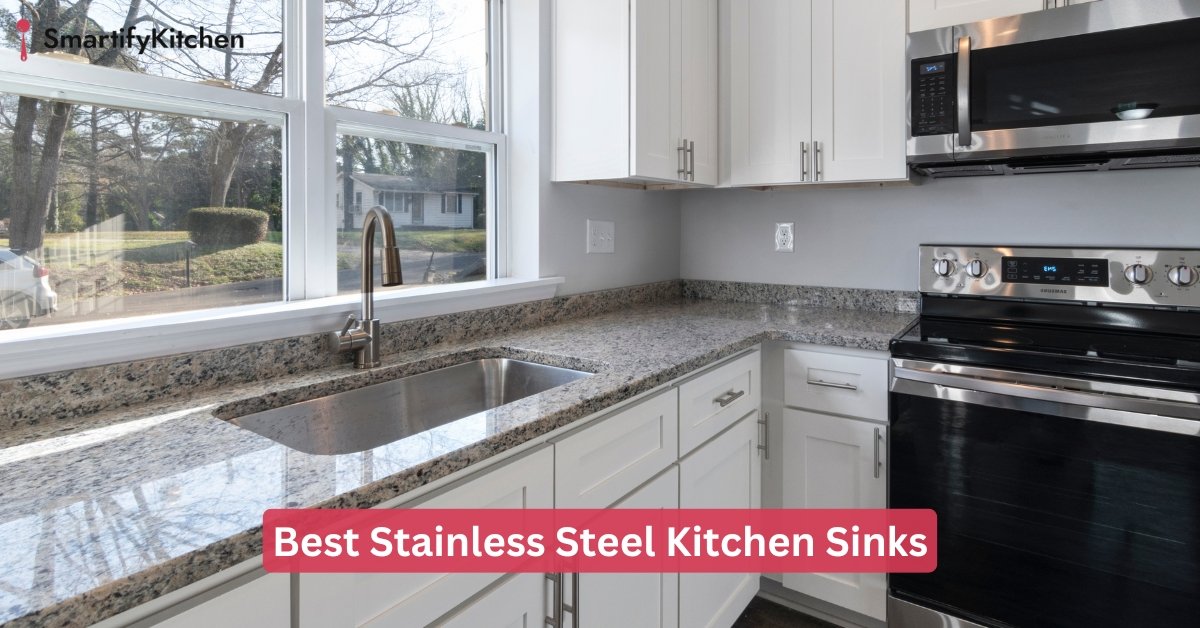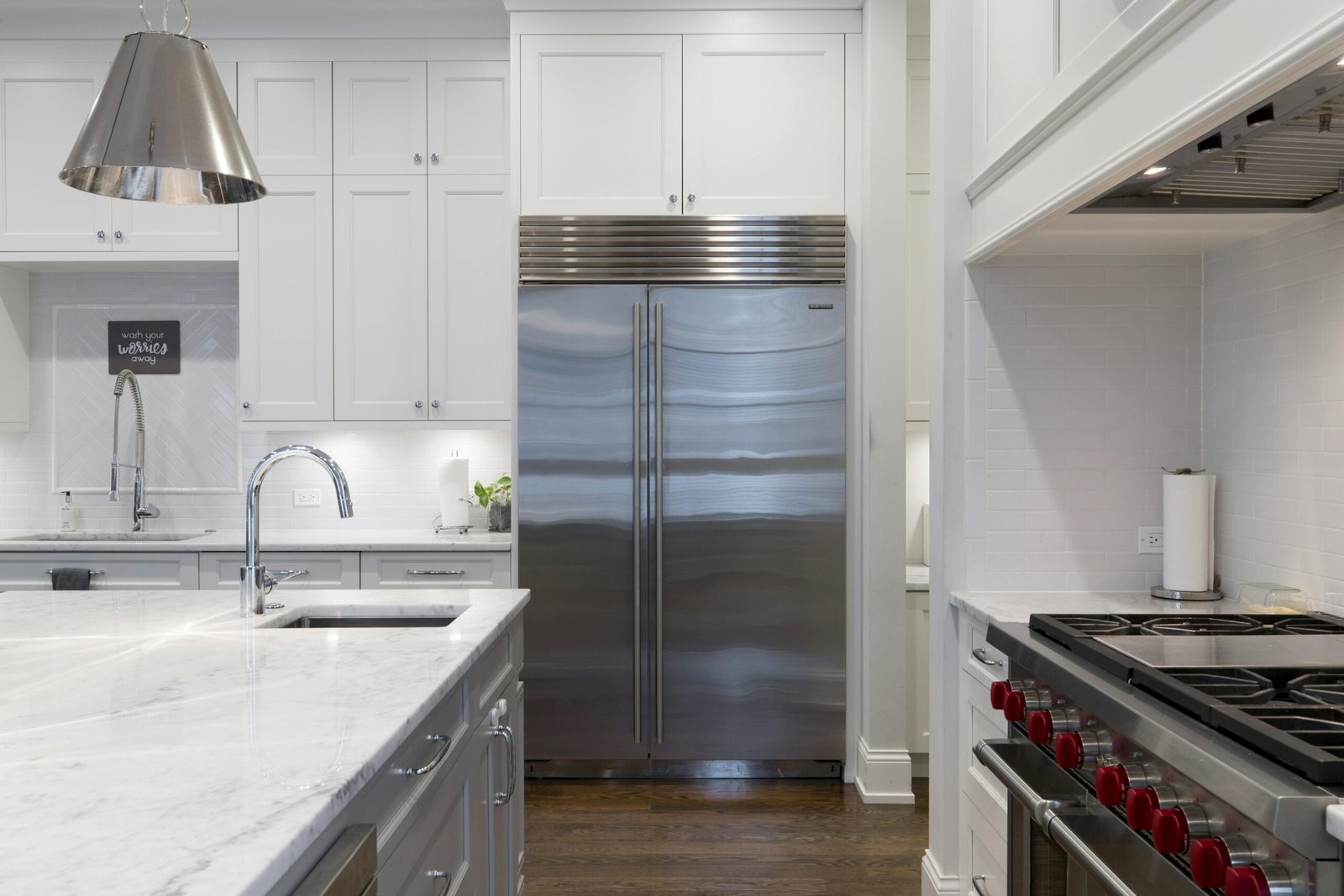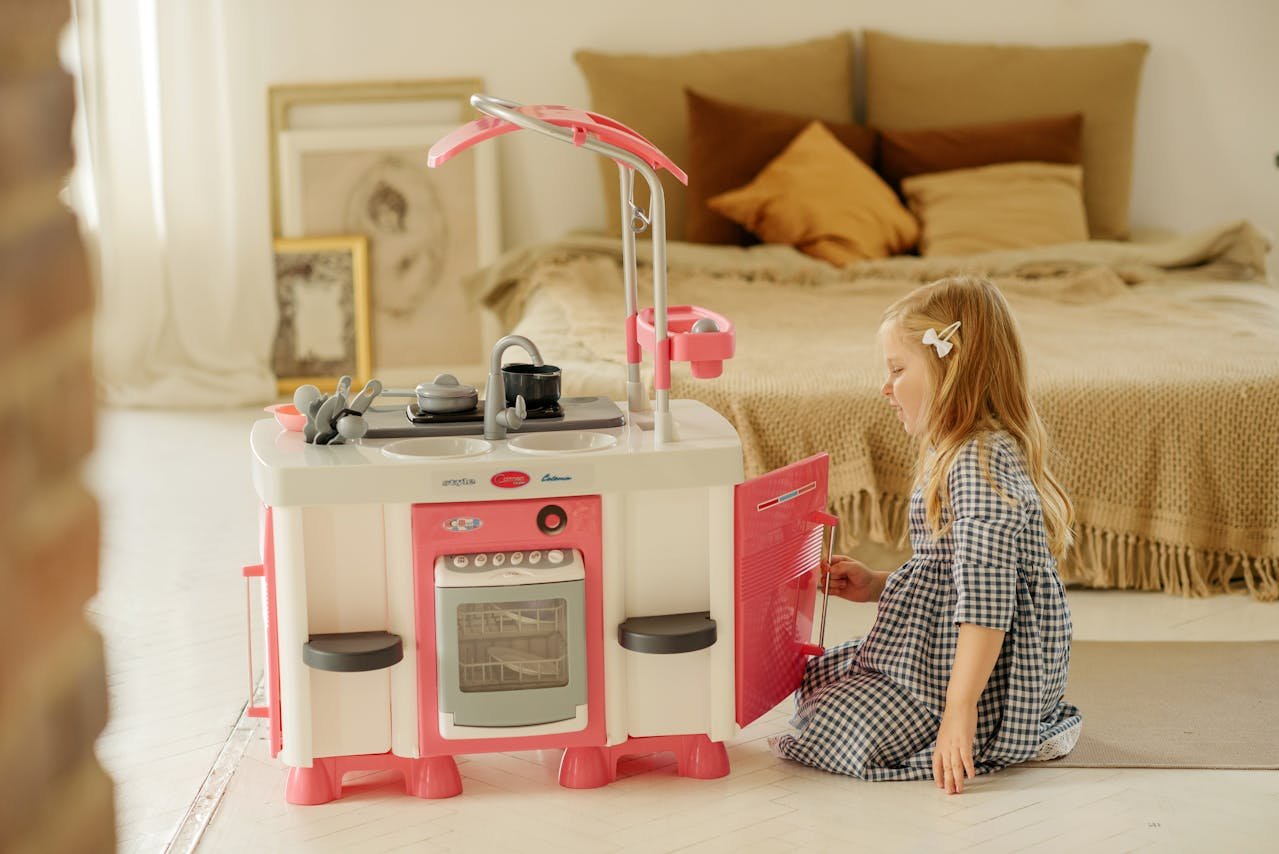Small Smart TVs for a Smart Kitchen
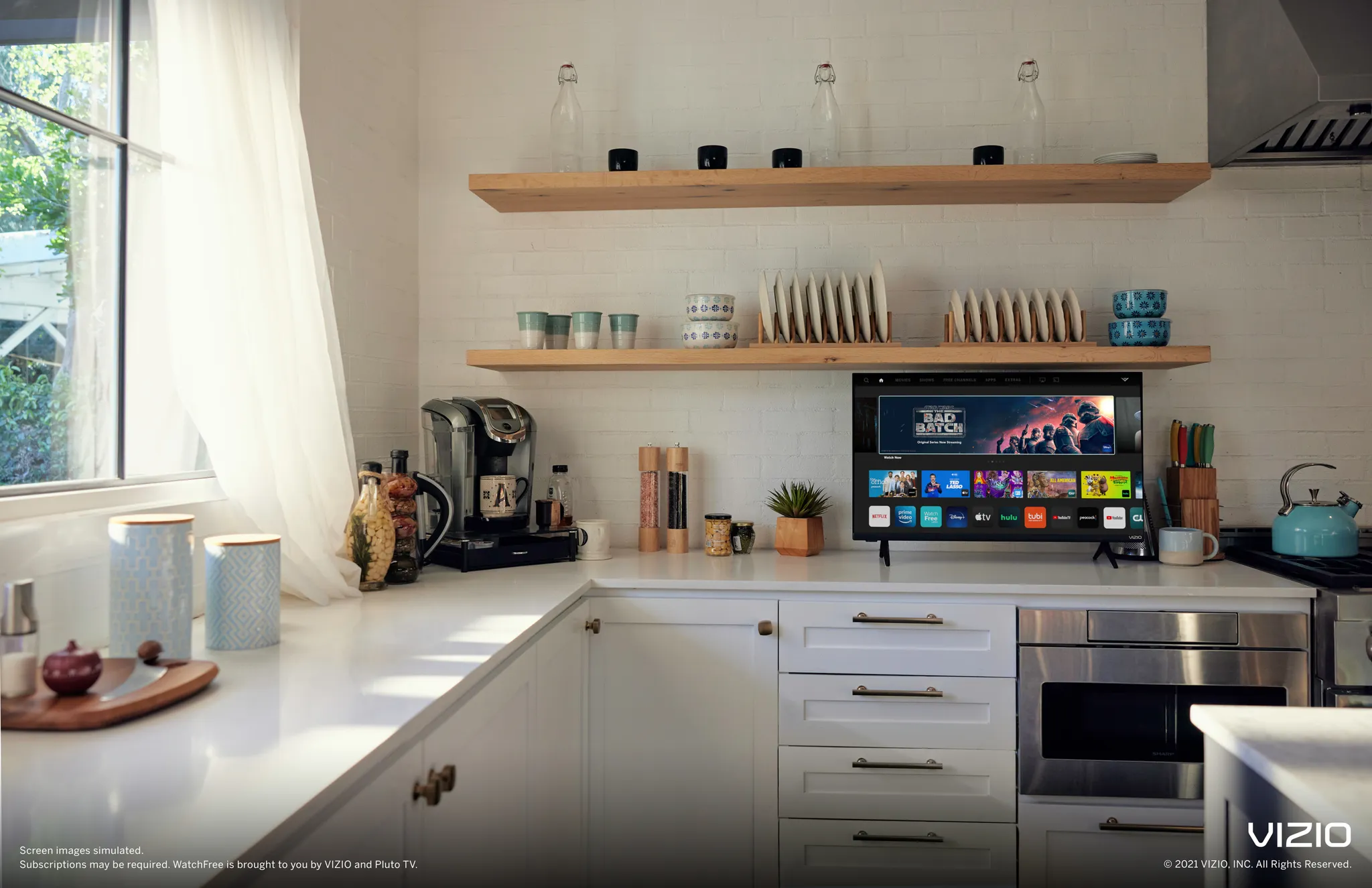
In today’s technologically advanced world, the kitchen is no longer just a place for cooking; it has evolved into a hub for socializing, experimenting with new recipes, and even catching up on the latest news or favorite shows.
Integrating a Small Smart TV for a Smart Kitchen into your kitchen can be a game-changer, making it easier to follow along with cooking tutorials, keep up with the latest trends, or simply entertain yourself while preparing meals.
However, choosing the right TV for your kitchen space requires careful consideration of several factors. This guide will walk you through the essentials of selecting a small smart TV for your kitchen, highlighting the best models available, key features to look for, and practical tips for installation.
Key Features to Look For in it
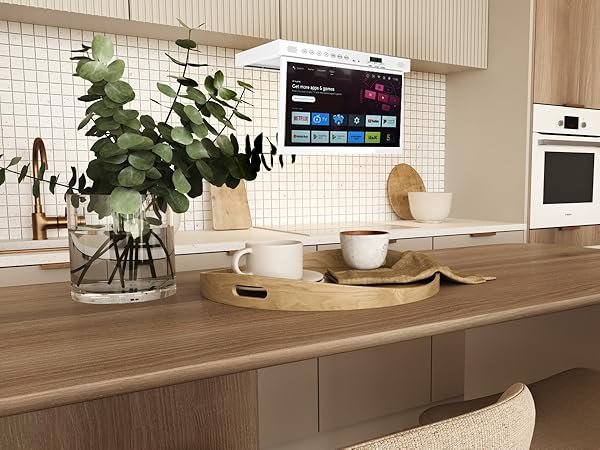
Size Considerations
When it comes to selecting a smart TV for your kitchen, size is one of the most crucial factors to consider. Kitchens typically have limited space, and a bulky TV could easily dominate the area or make it feel cramped.
The ideal size for a kitchen TV usually ranges from 19 to 32 inches. This size range is small enough to fit into tight spaces yet large enough to deliver a clear and enjoyable viewing experience.
For compact kitchens, a 19 to 24-inch TV might be perfect, as it can easily be mounted under cabinets or on a small section of the wall. For larger kitchens with more available wall space, a 28 to 32-inch TV could be more suitable.
It’s also essential to consider the distance from which you’ll be watching. If the TV is mounted above eye level, a slightly larger screen may be easier to view from various angles in the kitchen.
Resolution and Display Quality
While size is important, the resolution and display quality are equally crucial. With smaller TVs, resolution plays a significant role in ensuring that the image is crisp and clear, even when viewed up close.
A TV with a resolution of at least 1080p (Full HD) is recommended for kitchen use, as this will provide sharp images and good color accuracy.
For those who want the best possible picture quality, opting for a 4K UHD TV could be a great choice, even in a small size.
Although 4K resolution might seem excessive for a smaller screen, the enhanced clarity and detail can make a big difference, especially when watching cooking shows or instructional videos where fine details matter.

Additionally, consider the display technology—LED and OLED are the most common options. LED TVs are more affordable and provide good brightness, making them suitable for well-lit kitchens.
OLED TVs, on the other hand, offer superior contrast and color accuracy, but they tend to be more expensive and might not be necessary for a kitchen setup unless you’re after the very best image quality.
Smart Features
One of the primary reasons to choose a smart TV over a regular one is the range of smart features it offers.
These features can significantly enhance your kitchen experience by providing access to a variety of apps, streaming services, and connectivity options.
Streaming Apps: Ensure the TV supports popular streaming services like Netflix, Hulu, Amazon Prime, Disney+, and YouTube. This allows you to watch your favorite shows or find cooking tutorials directly on the TV without needing additional devices.
Voice Control: Many modern smart TVs come equipped with voice control features, which can be incredibly convenient in the kitchen.
Whether you’re in the middle of preparing a meal or have your hands full, you can use voice commands to change the channel, search for content, or adjust the volume.
Look for TVs that are compatible with virtual assistants like Amazon Alexa, Google Assistant, or have built-in voice recognition.
Connectivity: A good smart TV should have multiple connectivity options, including Wi-Fi, Bluetooth, and HDMI ports. Wi-Fi allows you to stream content wirelessly, while Bluetooth can be used to connect wireless speakers or headphones for an enhanced audio experience.
HDMI ports are essential if you plan to connect other devices, such as a cable box, gaming console, or DVD player.
Screen Mirroring: Some smart TVs offer screen mirroring, which allows you to cast content from your smartphone or tablet directly to the TV screen. This can be particularly useful in the kitchen when you want to display a recipe from your phone or tablet on a larger screen.
Mounting and Placement
The placement of your kitchen TV is critical to ensuring it doesn’t interfere with your cooking activities while still being easily viewable. There are several mounting options to consider based on your kitchen layout and available space.

Wall Mounting: Wall mounting is the most common option, and it can help save valuable counter space. When wall mounting, consider placing the TV at eye level when you’re standing, or slightly higher if you want to view it from multiple angles in the kitchen.
Adjustable wall mounts can be particularly useful, allowing you to tilt or swivel the TV for optimal viewing.
Under-Cabinet Mounting: For those with limited wall space, under-cabinet mounting is an excellent option. This involves mounting the TV beneath an upper cabinet, where it’s easily viewable but out of the way.
Some under-cabinet mounts are foldable, allowing you to tuck the TV away when it’s not in use.
Countertop Placement: If mounting isn’t an option, placing the TV on the countertop is another possibility. Look for compact TVs with sturdy stands that don’t take up too much space. Just ensure that the TV is placed in a location where it won’t be at risk of spills or heat from cooking appliances.
Installation and Setup Tips
Once you’ve chosen the perfect smart TV for your kitchen, the next step is installation and setup. Proper installation ensures that your TV is safely mounted and provides an optimal viewing experience.
Wiring and Connectivity
When installing a TV in the kitchen, managing wires and ensuring a stable internet connection are key considerations. Kitchens often have limited electrical outlets, so you may need to use a power strip or install additional outlets.
Ensure that the power cable is safely tucked away to avoid any risk of water damage or tripping hazards.
For a neat and organized look, consider using cable management solutions, such as cable clips or raceways, to keep wires hidden. If you’re wall-mounting the TV, running the wires through the wall can provide a cleaner appearance.
A stable Wi-Fi connection is essential for streaming content on your smart TV. If your kitchen is far from your router, consider using a Wi-Fi extender to ensure a strong signal. Alternatively, you can connect the TV directly to the router using an Ethernet cable for a more stable connection.
Mounting Options
Choosing the right mounting option is crucial for maximizing your kitchen space and ensuring comfortable viewing.
As mentioned earlier, wall mounting is the most common choice, but the specific mount you choose can make a big difference.
Fixed Mount: A fixed mount keeps the TV flush against the wall and is ideal if you don’t need to adjust the viewing angle. This is a good option for TVs that are mounted at eye level.
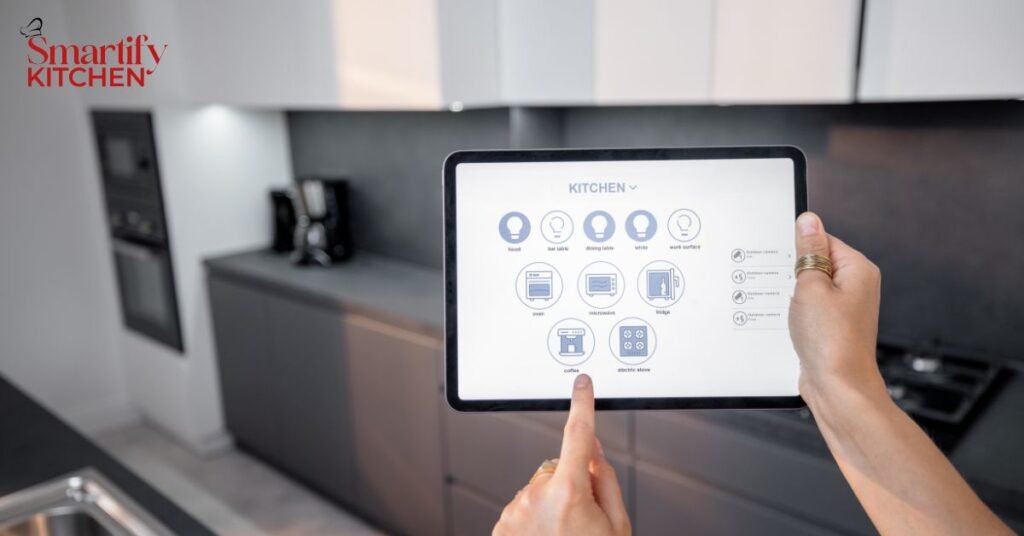
Tilting Mount: A tilting mount allows you to adjust the angle of the TV vertically, which can be useful if the TV is mounted higher up on the wall. This helps reduce glare and improves viewing comfort.
Full-Motion Mount: For maximum flexibility, a full-motion mount allows you to swivel the TV left or right, tilt it up or down, and even pull it away from the wall. This is ideal for larger kitchens where you might want to view the TV from different areas.
Under-Cabinet Mount: Under-cabinet mounts are specifically designed for kitchen use and allow the TV to be tucked away when not in use. Some models even have a flip-down feature, making them easy to store and retrieve.
Setting Up Smart Features
Once the TV is mounted, it’s time to set up the smart features. Begin by connecting the TV to your Wi-Fi network.
Follow the on-screen instructions to input your Wi-Fi password and connect the TV to the internet. If the TV supports Ethernet, you can connect it directly to the router using a cable for a more stable connection.
Next, download any necessary updates to ensure your TV is running the latest software. This will not only improve performance but also give you access to the latest apps and features.
Sign in to your streaming accounts and download any additional apps you might need. Many smart TVs allow you to customize the home screen, so arrange your apps for easy access to your favorite content.
If your TV supports voice control, set up the virtual assistant by linking it to your existing smart home devices. You may need to enable the TV in your virtual assistant’s app (e.g., Alexa or Google Home) and follow the prompts to complete the setup.
Pros and Cons of Having a Smart TV in the Kitchen
While the idea of having a smart TV in the kitchen sounds appealing, it’s essential to consider both the advantages and potential drawbacks before making your decision.
Pros
Let’s Explore some Pros.
Entertainment While Cooking: A smart TV in the kitchen allows you to catch up on your favorite shows, listen to music, or watch the news while cooking. It can make meal preparation more enjoyable and less of a chore.
Access to Cooking Content: With access to streaming services and YouTube, you can easily follow along with cooking tutorials, discover new recipes, and watch live cooking shows directly in your kitchen.
Multitasking: A kitchen TV can help with multitasking, such as setting timers, checking weather updates, or even participating in virtual cooking classes. Voice control features further enhance the convenience, allowing you to operate the TV hands-free.
Compact and Space-Saving: Small smart TVs are designed to fit into compact spaces, making them ideal for kitchens. Wall or under-cabinet mounting options help save valuable counter space.

Cons
Lets Review some Cons.
Potential Distractions: While a TV in the kitchen can be entertaining, it can also become a distraction. It’s easy to get engrossed in a show and lose track of time or overcook a meal. Balancing entertainment and focus is crucial.
Space Considerations: Even small TVs take up space, and in very compact kitchens, finding a suitable spot for a TV can be challenging. It’s important to ensure the TV doesn’t interfere with your kitchen workflow.
Cost: Investing in a good-quality smart TV, along with mounting accessories, can add up. Additionally, you may need to upgrade your Wi-Fi network or purchase extra streaming subscriptions, which can increase costs further.
Maintenance and Cleaning: Kitchens can be messy, and keeping a TV clean and free from grease or food splatters requires regular maintenance. The TV should be placed in a location where it’s less likely to be exposed to spills or heat.
Read more about : How to Create a Smart Kitchen Command Center
Conclusion
A small smart TV can be a valuable addition to your kitchen, providing entertainment, educational content, and convenience while you cook.
When choosing the right TV, consider factors such as size, resolution, smart features, and placement options to ensure it fits well with your kitchen layout and meets your needs.
While there are pros and cons to having a TV in the kitchen, with careful planning and the right setup, it can enhance your cooking experience and make your kitchen a more enjoyable place to be.

